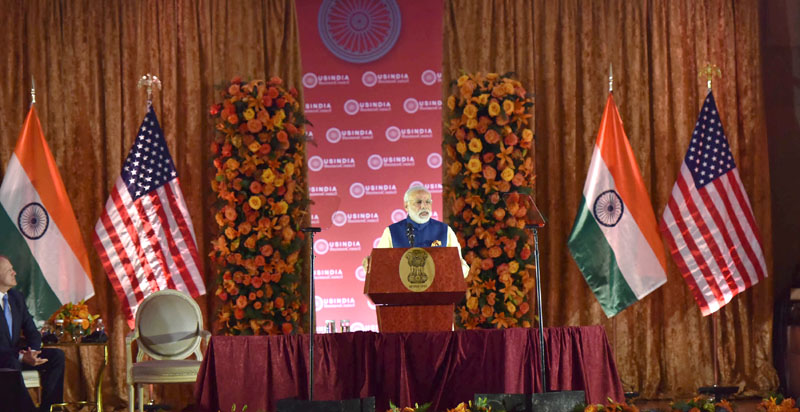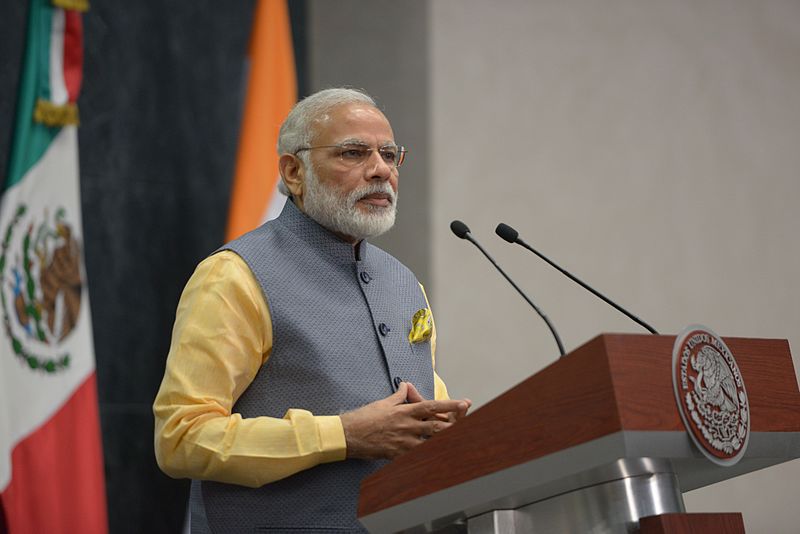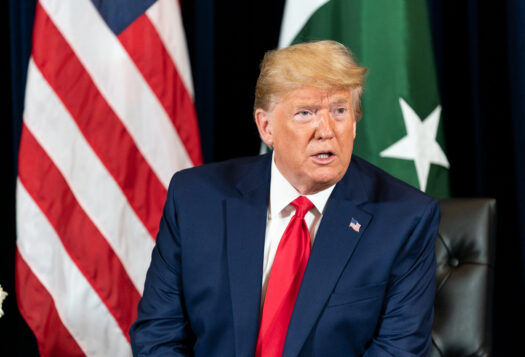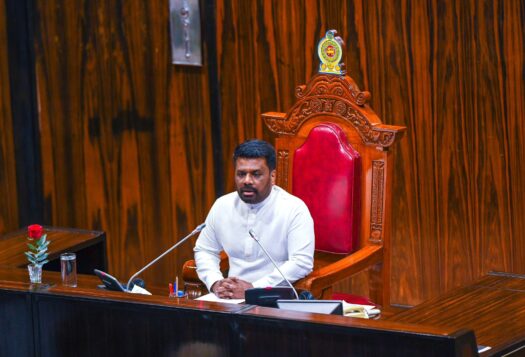
The Prime Minister of India Narendra Modi is scheduled to embark on his first official state visit to the United States this week. While Prime Minister Modi has previously been hosted by American presidents, this particular visit holds greater significance as state visits occupy a significant position in the United States and are extended to highly esteemed allies or friendly nations. This visit also assumes significance for Prime Minister Modi as his second term as Prime Minister is slated to conclude in May 2024. In under a year, he will participate in general elections. Therefore, with the anticipation of extending his popularity beyond national boundaries, Modi aims to achieve this feat after a period of nine years.
A Significant Visit
The visit by Narendra Modi carries considerable significance with regards to anticipated outcomes. First, inviting Prime Minister Modi for his inaugural state visit demonstrates the progress made in U.S.-India relations over recent years and represents Washington’s effort to attract India towards its strategic objectives. As Beijing asserts itself in the Indo-Pacific, the United States anticipates a more forward leaning posture from India vis-à-vis China. As per the official statement released by the White House, the upcoming visit is expected to reinforce both countries’ shared dedication towards fostering an Indo-Pacific region that is characterized by freedom, openness, prosperity, and security.
While India has taken significant steps in cooperating with the United States, particularly following repeated Chinese incursions across the Line of Actual Control, U.S. based analysts have cautioned against setting excessively high expectations for U.S.-India cooperation. The current low point in India-China relations has drawn the United States and India together, but New Delhi appears hesitant to take a hard stance against the perceived threat posed by China. India may be hesitant to assert itself due to concerns over potential repercussions from China.
While India has taken significant steps in cooperating with the U.S., particularly following repeated Chinese incursions across the Line of Actual Control, U.S. based analysts have cautioned against setting excessively high expectations for U.S.-India cooperation.
Nonetheless, a policy of under-balancing would not yield any benefits for India. Appeasing China or ignoring its increasing assertions may ultimately encroach upon established boundaries between India and China. The recent border conflicts between India and China suggest India’s failure to maintain a balance of power with China. India has a great interest in planning against potential dangers posed by China. The QUAD presents a significant opportunity for member states to counterbalance the power and perceived threat posed by China in the Indo-Pacific region and beyond. India ought to assume a leading position within the group. The United States aims to persuade India of its sincere consideration in global affairs, specifically in the Indo-Pacific, while simultaneously expecting India to establish itself as a significant participant in order to uphold worldwide stability and security.
Furthermore, the significance of this visit is heightened by the fact that India is currently holding the presidency of the G-20. India has pledged to convene global leaders to discuss climate change, sustainable growth, and global health security. This presents an opportunity for India to position itself as a global leader, not only within the Global South, but on a global scale, as it espouses the principles of Vasudhaiva Kutumbakam, which emphasizes the interconnectedness of all living beings, and the concept of one earth, one family, one future. The simultaneous presidency of the Shanghai Cooperation Organization (SCO) by India has contributed to the elevation of India’s status, and the upcoming visit is expected to enhance India’s image as a significant global player.
What to Expect
Both the states would like to achieve substantial progress from this visit. Only ten days before the visit, U.S. National Security Advisor Jake Sullivan met with his Indian counterpart Ajit Doval in Delhi. Both the parties identified artificial intelligence, quantum computing, semiconductors, telecommunications, defense and space as the core area of discussion for the national security advisors’ meeting. Prime Minister Modi and President Biden will likely discuss these issues further during the state visit.
In the lead up to the visit, the United States and India also aim to make progress on various initiatives. For example, the Initiative on Critical and Emerging Technologies (iCET), which was initiated more than a year ago, shows promise as “an interlinked framework for cooperation on critical and emerging technologies.” Additional collaboration under iCET is expected, which stands to enhance India’s capabilities in defense sector through collaboration and cooperation in the field of quantum computing, and artificial intelligence.
The United States and India are also expected to sign agreements allowing the transfer of technology by General Electric to manufacture the jets in India. The agreement would represent a significant accomplishment, as it would position India among a select group of nations possessing this technology. Additionally, it is anticipated that India would finalize the purchase of 30 MQ-9B predator armed drones from the United States. The three-billion-dollar agreement was announced in 2017, but has yet to be finalized.

Thorny Issues Remain
Amid excitement and optimism ahead of the visit, thorns remain in U.S.-India ties. While the Biden administration has prioritized the strategic significance of India in the global political landscape, concerns remain of the Modi government’s purported democratic erosion, potential infringements on freedom of expression, and reported instances of minority persecution. Additionally, India’s tradition of strategic nonalignment raises question as to whether the United States can trust India in times of security crisis in Asia. During the visit, Prime Minister Modi and his administration will walk a fine line between assuring the Biden administration that India is the security partner Washington envisions without raising expectations for Indian involvement in conflicts beyond its strategic interests.
As Modi is scheduled to engage in dialogue with diaspora leaders, using soft power and influence through diaspora channels presents a more complex scenario than anticipated.
Furthermore, it is noteworthy that this visit is occurring following Rahul Gandhi’s visit to United States from May 30 to June 5. In April, Rahul Gandhi was stripped of his parliamentary membership due to comments regarding the Modi surname, a move widely perceived as retaliation to remove opposition forces ahead of 2024 general elections. During his visit, Rahul Gandhi criticized Prime Minister Modi on multiple occasions for what he deemed to be “anti-democratic” actions and advocated for a more inclusive vision of India at various events. Nevertheless, he was cognizant of the importance of the Indo-U.S. relationship and made efforts to enhance and fortify it. During the state visit, Prime Minister Modi will aim to project Washington’s support not just for India, but for himself as elections approach.
Rahul Gandhi’s visit also highlight important divisions within the Indian diaspora which Modi is likely to address during his visit. Gandhi’s speeches on democratic backsliding under Modi was aimed at attracting support from the Indian diaspora residing in the United States, which has long been perceived as a homogenous group. Instead, the diaspora’s response revealed that it is also fragmentated. As Modi is scheduled to engage in dialogue with diaspora leaders, using soft power and influence through diaspora channels presents a more complex scenario than anticipated. Some events for Modi’s interaction with diaspora communities are organized by the Overseas Friends of the BJP (OFBJP) and Hindu Swayam Sevak Sangh, both linked to Hindutva ideologies. The diaspora in the United States divided along religious, caste, and political lines are unlikely to support these outreaches, presenting a new challenge for Modi amid increasing politicization and factionalism.
Conclusion
Prime Minister Narendra Modi’s state visit is filled with both opportunities and challenges. The relationship between India and the United States is at its height, and if India can show promise for the future, the United States appears willing to make significant concessions on domestic issues and around human rights. Therefore, Modi’s work is not as simple as it first appears to be. He needs to deliver at certain fronts to enhance the ties in technology transfer. He needs to be more realistic, reassure the United States of its friendship, and work to improve domestic conditions.
Also Read: How the US-India iCET Can Drive New Age Technology Diplomacy
***
Image 1: U.S.-India via Wikimedia Commons
Image 2: Prime Minister Modi via Wikimedia Commons


